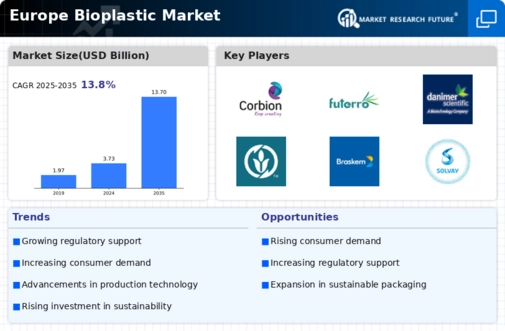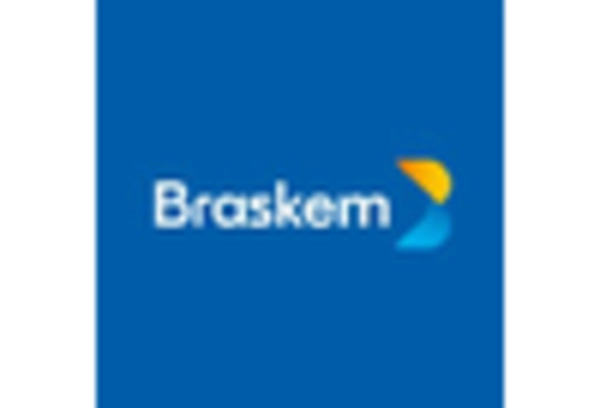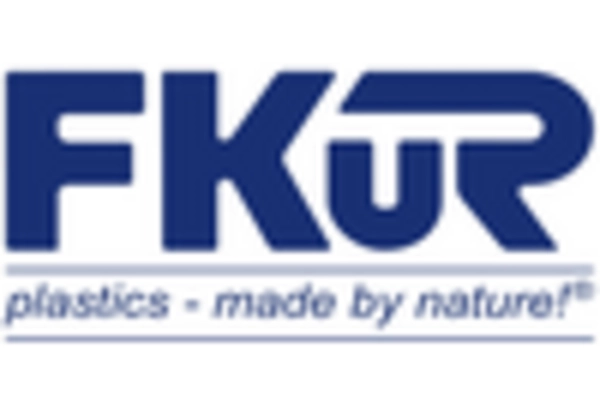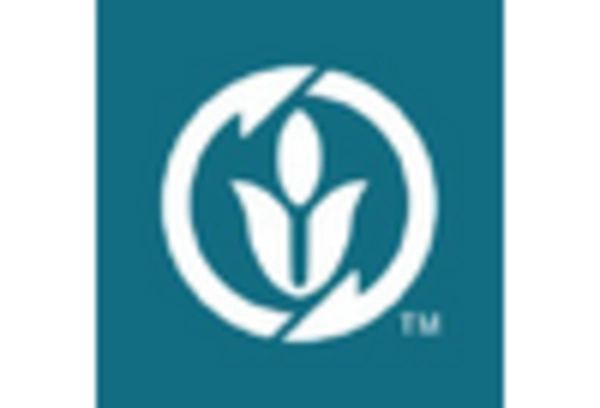Government Regulations and Policies
The implementation of stringent regulations and policies aimed at reducing plastic waste is likely to bolster the Europe Bioplastic Market. Governments across Europe are increasingly enacting laws that promote the use of biodegradable materials and impose restrictions on single-use plastics. For instance, the European Union has set ambitious targets for reducing plastic waste, which may create a favorable environment for bioplastics. This regulatory landscape not only encourages manufacturers to innovate but also provides consumers with more sustainable options. As a result, the bioplastics sector is expected to witness substantial growth, driven by compliance with these regulations and the push for a circular economy.
Corporate Sustainability Commitments
Many companies in Europe are increasingly committing to sustainability goals, which appears to be a driving force behind the growth of the Europe Bioplastic Market. Corporations are recognizing the importance of adopting sustainable practices to enhance their brand image and meet consumer expectations. As a result, numerous businesses are integrating bioplastics into their product lines, thereby contributing to the overall market growth. Reports suggest that over 50% of major European brands are now exploring bioplastic alternatives, indicating a significant shift towards sustainable materials. This trend not only supports the bioplastics industry but also encourages innovation and collaboration among stakeholders.
Investment in Research and Development
Investment in research and development (R&D) is crucial for the advancement of the Europe Bioplastic Market. Increased funding for R&D initiatives is likely to lead to the discovery of new bioplastics and improved production methods. This focus on innovation may enhance the performance characteristics of bioplastics, making them more appealing to manufacturers and consumers alike. Recent statistics indicate that R&D spending in the bioplastics sector has risen by approximately 15% annually, reflecting a growing commitment to developing sustainable materials. As R&D efforts continue to expand, the potential for new applications and market opportunities in the bioplastics industry is expected to increase, further driving market growth.
Rising Consumer Demand for Sustainable Products
The increasing awareness among consumers regarding environmental issues appears to drive the Europe Bioplastic Market. Consumers are increasingly seeking products that align with their values, particularly those that are sustainable and eco-friendly. This shift in consumer behavior has led to a notable rise in demand for bioplastics, which are perceived as a viable alternative to conventional plastics. According to recent data, the bioplastics market in Europe is projected to grow at a compound annual growth rate of approximately 20% over the next five years. This trend suggests that manufacturers are likely to invest more in bioplastic production to meet the evolving preferences of environmentally conscious consumers.
Technological Innovations in Bioplastic Production
Advancements in technology are playing a crucial role in shaping the Europe Bioplastic Market. Innovations in biopolymer production processes, such as improved fermentation techniques and the development of new bio-based feedstocks, are enhancing the efficiency and cost-effectiveness of bioplastic manufacturing. These technological breakthroughs may lead to a wider range of applications for bioplastics, making them more competitive with traditional plastics. Furthermore, research indicates that the production capacity of bioplastics in Europe is expected to increase significantly, potentially reaching over 2 million tons by 2026. This growth in production capacity could further stimulate market expansion and attract investment in the sector.

















Leave a Comment